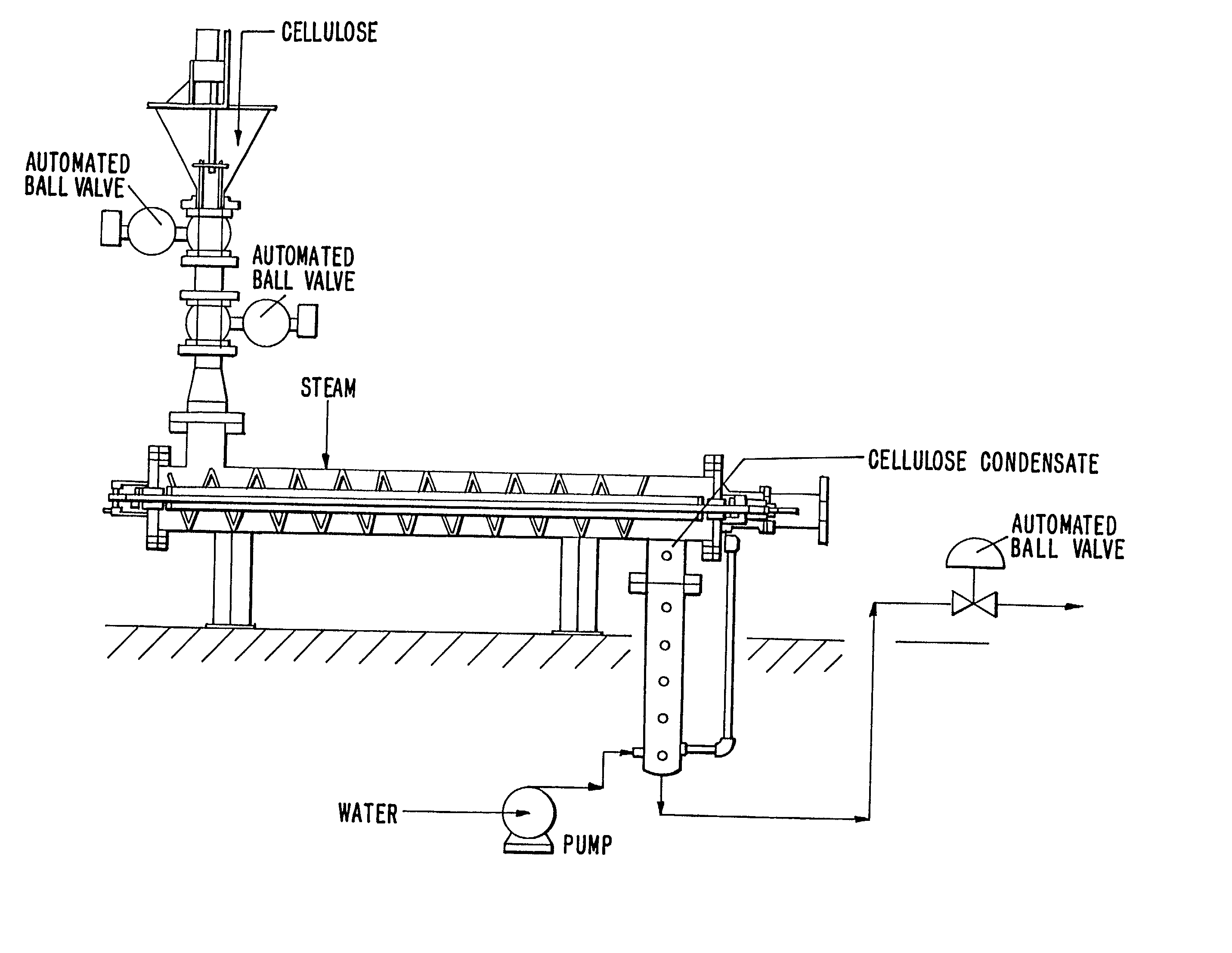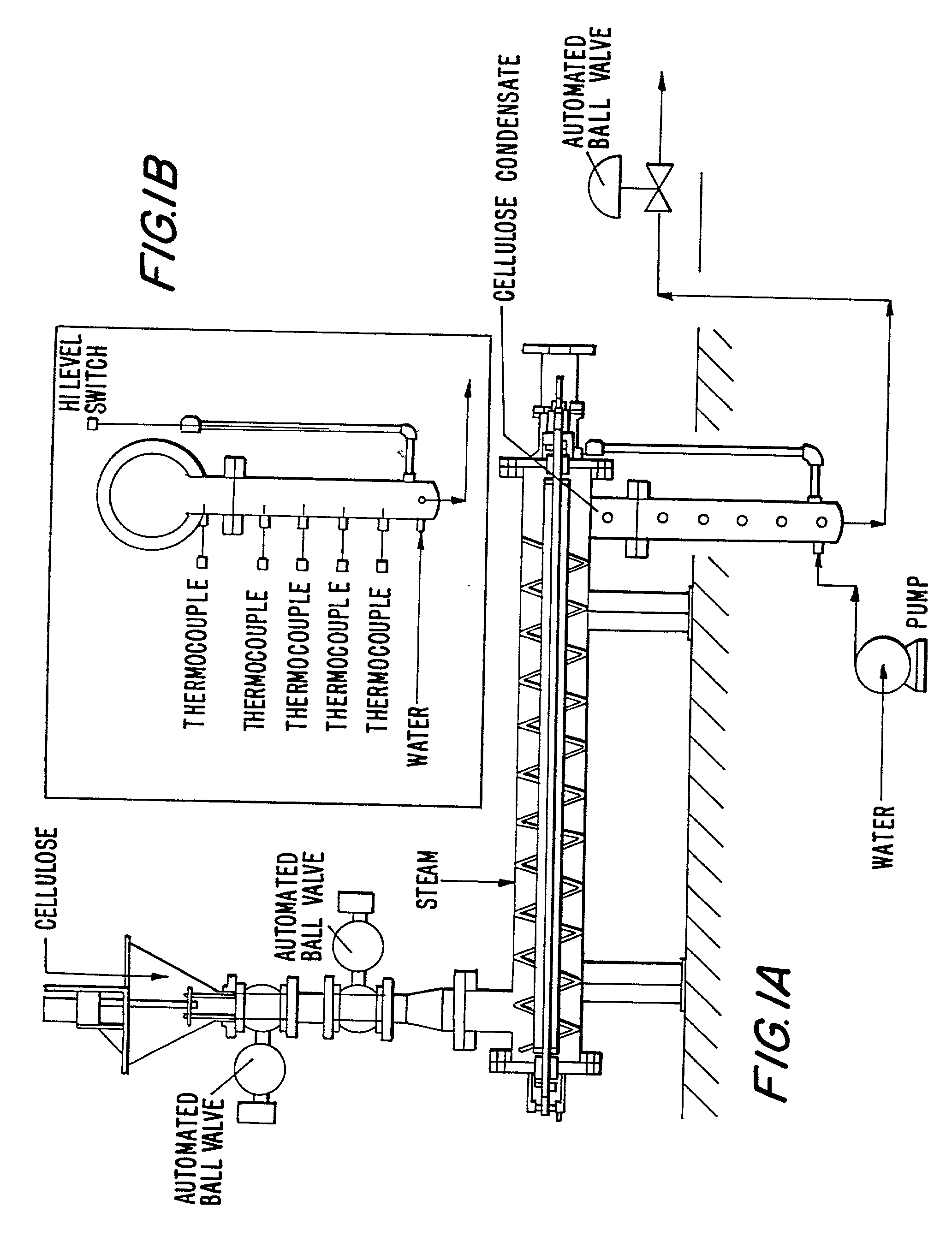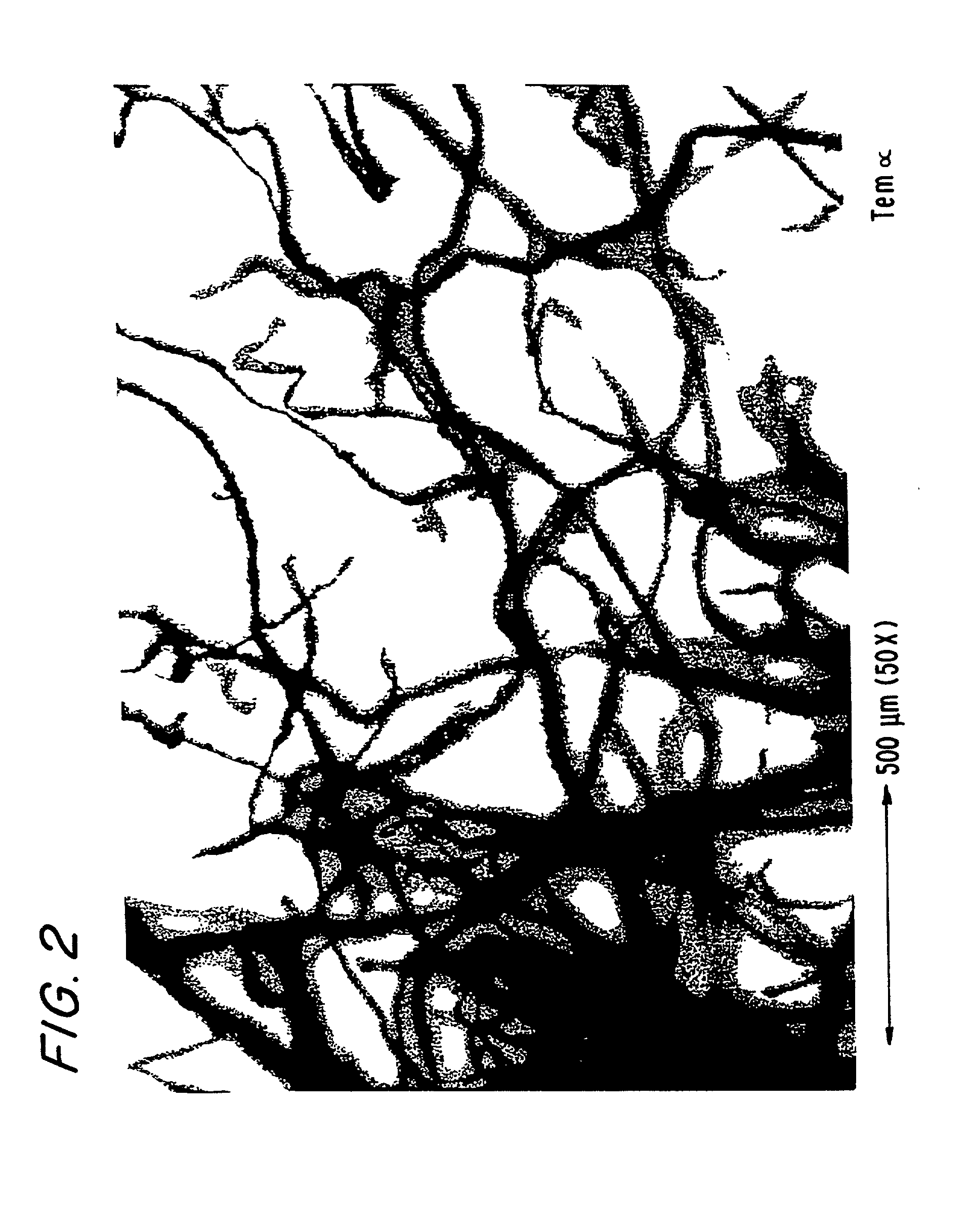Process for producing microcrystalline cellulose
a technology of microcrystalline cellulose and production process, which is applied in the direction of multi-stage pulping process, sugar derivate, pulping with inorganic bases, etc., can solve the problem of limiting the production of non-desirable derivatives
- Summary
- Abstract
- Description
- Claims
- Application Information
AI Technical Summary
Benefits of technology
Problems solved by technology
Method used
Image
Examples
example 1
A--Example 1
TEMALFA 93 Cellulose
[0148] 1 kg of Temalfa 93 cellulose was repulped at a consistency of 2.5% in water, then partially dried with the help of a press and coarsely grounded to obtain a residual moisture of 60.3%.
[0149] From the above-obtained product, 229 g (equivalent to 90.913 g of cellulose) were introduced in a 24 litres reactor pre-heated with saturated steam. The steam is then introduced directly from the bottom of the reactor and a rapid purge is carried out to evacuate the non condensables.
[0150] Within 1 minute the product reached a temperature of 220.degree. C. where it is maintained for 13 minutes. The pressure is then partially released and pressurised cold water is injected in the reactor in such a way as to allow rapid cooling of the pulp. Mixing is initiated at this stage to ensure an homogeneous discharge and to carry on to the next step of the treatment. The washed filtered product (252 g at 65.7% moisture) is white, slightly greyish.
[0151] The pH of the ...
example 2
B--Example 2
Temalfa 93 Cellulose with Additives
[0159] A solution of 1% sodium sulphite is used at a ratio of 20 / 1 on 100 g of Temalfa cellulose. After pressing and coarse grinding, 214 g of soaked cellulose at 75.3% moisture is introduced into the pre-heated reactor.
[0160] The product is treated as in the example 1 for 12 minutes. After filtration and washing, 363 g of pulp at 75.3% moisture is obtained and the pH of the filtrate is 4.3.
[0161] 357 g of bleached pulp obtained above is brightened with peroxide at the same conditions as in example 1. After washing and filtration, 253.3 g of pulp is recovered (moisture=65.5%).
[0162] A homogenisation is carried out with 250 g of brightened pulp described above and after filtration and washing, 237.7 g of pulp is recovered (64% moisture).
[0163] Analysis
[0164] DP=219
[0165] Cr.I=88.9
[0166] MS=46.6 .ANG.
example 3
C--Example 3
Kraft Cellulose
[0167] 210 g of kraft cellulose humidified at 55.8% is treated at 220.degree. C. for 13 minutes.
[0168] After filtration and washing, 366.4 g of cellulose are recovered at 77.7% moisture. The pH of the filtered solution is 4. The cellulose obtained is coloured, light brown / caramel.
[0169] A brightening step is carried out with the same conditions as previously described. A bleaching step is then carried out with hypochlorite with 1% hypochlorite (on dry cellulose basis) at a pH of 11 at 40.degree. C. during 2 hours. The filtered bleached product has a weight of 237.5 g and a humidity of 66.2%. The homogenisation allowed the recovery of 240.4 g of pulp at 67.1% humidity.
[0170] Analysis
[0171] DP=224
[0172] Cr.I=88.8
[0173] MS=43.1 .ANG.
PUM
| Property | Measurement | Unit |
|---|---|---|
| Fraction | aaaaa | aaaaa |
| Pressure | aaaaa | aaaaa |
| Angle | aaaaa | aaaaa |
Abstract
Description
Claims
Application Information
 Login to View More
Login to View More - R&D
- Intellectual Property
- Life Sciences
- Materials
- Tech Scout
- Unparalleled Data Quality
- Higher Quality Content
- 60% Fewer Hallucinations
Browse by: Latest US Patents, China's latest patents, Technical Efficacy Thesaurus, Application Domain, Technology Topic, Popular Technical Reports.
© 2025 PatSnap. All rights reserved.Legal|Privacy policy|Modern Slavery Act Transparency Statement|Sitemap|About US| Contact US: help@patsnap.com



